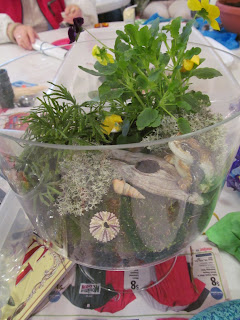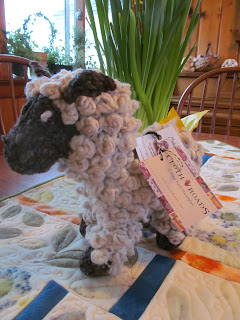I love, love studying different cultures through their hand made textiles. Those are my favorite types of books to read and of course following different blogs and web sites, there's so much great information out there. One website I follow is
http://www.clothroads.com. They sell hand-made textiles made from women all around the world. the profits go directly to the women to help them be independent, stay at home with their children and purchase things for their families. I'm not explaining this to well please click on the link and read about their wonderful work.
Last Friday I saw on their web site a vintage Japanese boro sleeve fragment. I never could afford a whole jacket and was excited to order a piece of one,
and come Monday it arrived!
This is a little explanation of this piece.
Dating to the Edo-Meiji era in Japan, this boro sleeve fragment is made up of very old cotton. Pieces include six different stripes and a tan gabardine fabric with sashiko (mending) in white cotton thread, ikats, tan and brown geometric stenciled prints and a few solid indigo patches.
Boro or tattered rags in Japanese is a term used for utilitarian folk textiles produces by rural, impoverished farmers and fishermen in the late 19th and early 20th centuries. Hand loomed and dyed cotton or hemp scraps of clothing and bedding were patched and stitched together to prolong the use of a fabric, strengthen it against wear and increase warmth for the wearer. Now these coats and jackets etc. are highly valued and collected.
It's hard to believe this piece from the late 1800's to early 1900's once worn by a poor farmer or fishermen, mended and patched over and over would end up on the other side of the world at my little house for me to treasure. The world is so small. Someday I will have this matted and framed.
This shows the indigo blue ikats pieces on the right with a light stenciled piece on the left.
The back of the piece.
Close up of the original(?) fabric under the lining.
When I was on the site I also order this knitted sheep made by Monical Njoki, from Molo, Kenya.
In 2007 rural women I Molo, Kenya, turned one of their local natural resources into a source of supplemental income. They realized that instead of paying a shearer to shear their sheep and take away the wool, they could use it to handcraft toys, rugs and purses. With the support of Oregon based Friends of Kenya Schools and Wildlife and the Network for Eco-Farming in Africa. the women began spinning and dyeing their wool, then hand-knitting whimsical animals. The sale of item from the Molo Wool Project enables the women to pay school fees for their children and provide for household needs.
Not that I really wanted a sheep but how could I not help these women. I've been to Kenya and fell in love with the kind people who live there. Also my husband and I've been sponsoring a little girl who lives there for quite a few years. Someday we hope to go back.
Thus my two new treasurers.
Last weekend I woke up to a beautiful sunrise and out my kitchen window
there was a little cardinal sunning himself.
Everyone was gone for the day and I was excited to be alone!
Out to the dye studio I went, lit a fire in the wood stove and stayed there all day. First I played with rust dyeing, rolling this silk scarf up in a rusted coil, wetting it down with vinegar water and wrapped it in plastic. It's setting now doing its thing.
I mordant a batch of plaid and striped wools I bought last summer getting them ready for the dye pots this summer.
Two summers ago I planted Hopi sunflower seeds. I put two batches on, one in a stainless steel pot with wool,
and one in my iron pot with wool. Simmered them on the wood stove for awhile.
Next week we'll see how all my dyeing turned out.

























































